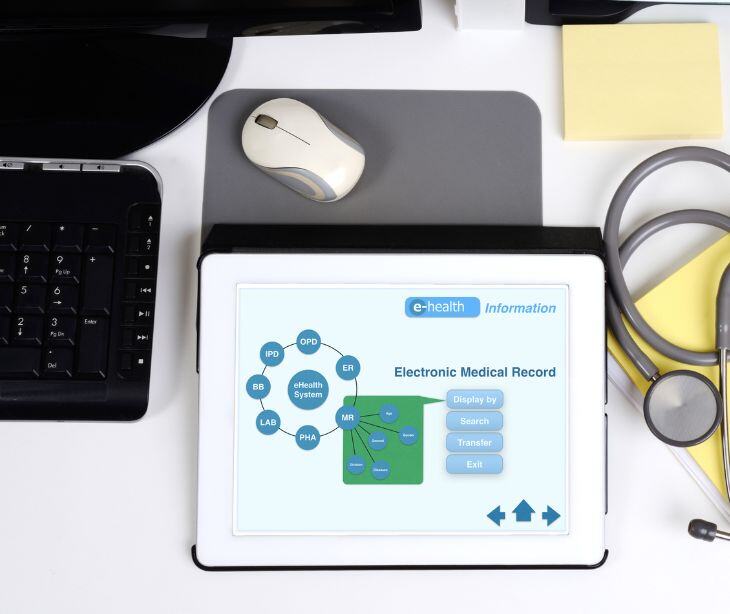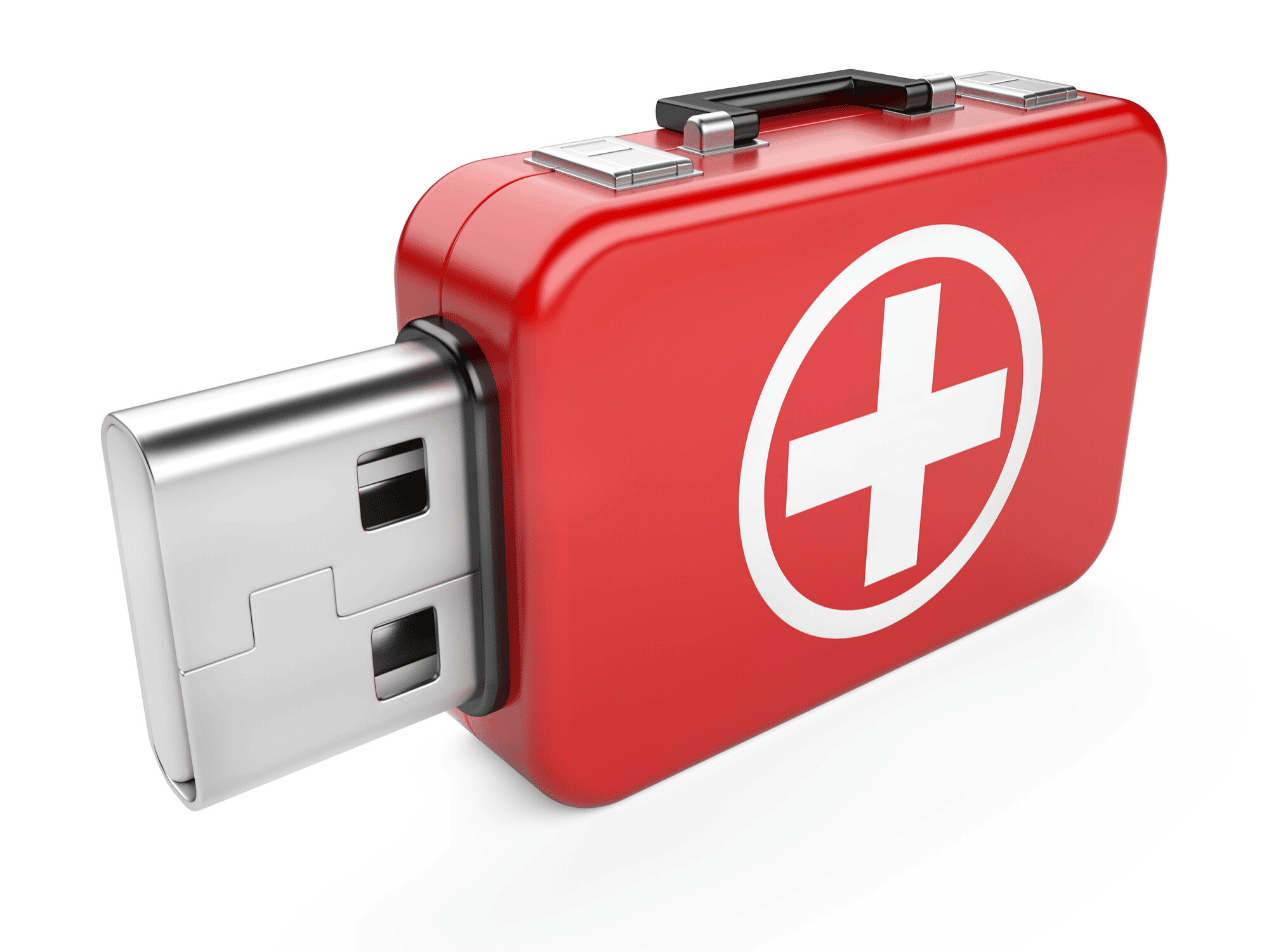
Electronic health information (EHI) is the electronic copy of a person's health details, containing their medical background, diagnoses, medications prescribed to them, and treatment strategies, accompanied by dates for immunization schedules. It also includes radiology illustrations as well as lab findings, among others.
Understanding electronic health information (EHI)
Before the digitization of healthcare, healthcare providers would have to diligently record their patients' health and treatment through written medical records. “Beginning in the 1960s, computers began to enter the scene in health information management (HIM) as a way to standardize and share medical records.” EHI compiles every aspect of a patient's health into one electronically accessible format. It thus has revolutionized the healthcare industry, transforming how medical data is stored, accessed, and utilized. Essentially, EHI consolidates all aspects of a patient's health into a single, electronically accessible format.
Related: What is an electronic health record (EHR)?
Components of EHI
- Patient demographics: Basic information about the patient such as name, age, gender, contact details, etc.
- Medical history: Records of past illnesses, surgeries, hospitalizations, and family medical history.
- Clinical notes: Notes taken by healthcare providers during patient visits, documenting symptoms, observations, and treatment plans.
- Medications: Information about current and past medications prescribed to the patient, including dosages and frequencies.
- Laboratory results: Results from blood tests, urine tests, genetic tests, and other diagnostic
- tests.
- Imaging results: Reports from X-rays, MRIs, CT scans, and other imaging studies.
- Allergies and adverse reactions: Information about allergies, intolerances, and adverse reactions to medications or substances.
- Immunization history: Record of vaccinations received by the patient.
- Care plans: Plans created by healthcare providers outlining the patient's ongoing care and treatment goals.
Importance of EHI
Enhanced accessibility and efficiency
Unlike traditional paper-based records, EHI can be accessed instantaneously by authorized healthcare providers from multiple locations. This allows for quicker decision-making and coordination of care, especially in emergency situations where timely access to medical information can be critical.
Go deeper: What is data accessibility in healthcare?
Improved coordination of care
EHI facilitates better coordination among healthcare providers involved in a patient's care. Specialists, primary care physicians, nurses, and other healthcare professionals can all access the same up-to-date information, leading to more integrated and comprehensive healthcare delivery.
Support for evidence-based medicine
With EHI, healthcare providers have access to a wealth of data that can support evidence-based medicine. By analyzing aggregated EHI across patient populations, researchers and healthcare organizations can identify trends, patterns, and best practices for treatment and disease management.
Patient empowerment
EHI also empowers patients by giving them access to their own health information. Patient portals and secure messaging systems allow individuals to view their test results, track their medications, communicate with their healthcare providers, and actively participate in decisions regarding their health.
See also: HIPAA Compliant Email: The Definitive Guide
Benefits of EHI
- Accuracy and legibility: EHI reduces errors associated with illegible handwriting or lost paper records, improving patient safety and care quality.
- Cost savings: Transitioning from paper-based records to EHI has lead to significant cost savings over time by reducing administrative burdens, storage costs, and redundant testing.
- Data integration: EHI supports the integration of clinical data from various sources, enabling a more holistic view of a patient's health.
- Security and privacy: Robust security measures can be implemented to protect EHI from unauthorized access, ensuring patient confidentiality and compliance with privacy regulations such as HIPAA.
Challenges and considerations
- Interoperability: Ensuring that different EHI systems can communicate and exchange data seamlessly remains a challenge. Standardized formats and protocols are essential to achieving interoperability.
- Data accuracy and integrity: Errors in data entry or transmission can compromise the accuracy and integrity of EHI, potentially affecting patient care.
- Privacy concerns: Protecting EHI from data breaches and unauthorized access requires robust security measures and adherence to privacy regulations.
- User training and adoption: Healthcare providers and staff need adequate training to effectively use EHI systems, and there may be resistance to adopting new technologies.
Tips and best practices for managing EHI
Effective management of EHI ensures data integrity, security, and optimal use in healthcare settings. Here are some essential tips and best practices for healthcare providers, IT professionals, and organizations:
Prioritize data security and privacy
- Implement strong authentication: Use multi-factor authentication (MFA) to ensure that only authorized personnel can access EHI.
- Encrypt data: Encrypt EHI both at rest and in transit to protect it from unauthorized access and breaches.
- Regular security audits: Conduct regular security audits and vulnerability assessments to identify and mitigate potential threats.
- Compliance with regulations: Adhere to regulatory standards such as the Health Insurance Portability and Accountability Act (HIPAA) to ensure data privacy and security.
Ensure data accuracy and integrity
- Standardized data entry: Use standardized formats and coding systems (e.g., ICD-10, SNOMED CT) for data entry to maintain consistency and accuracy.
- Regular data quality checks: Perform routine data quality checks to identify and correct errors or inconsistencies in EHI.
- Training and education: Provide ongoing training for healthcare providers and staff on accurate data entry and management practices.
Enhance interoperability
- Adopt standardized protocols: Implement standardized data exchange protocols such as HL7 (Health Level Seven) and FHIR (Fast Healthcare Interoperability Resources) to facilitate seamless data sharing.
- Collaborate with stakeholders: Work with EHR vendors, healthcare providers, and other stakeholders to ensure systems are compatible and can communicate effectively.
- API integration: Utilize Application Programming Interfaces (APIs) to enable the integration of EHI with other healthcare systems and applications.
Promote patient engagement
- Education and support: Educate patients on how to use digital health tools and provide support to help them navigate their health information.
- Transparency and access: Ensure that patients can easily access their EHI and understand their rights regarding their health data.
Optimize workflow and usability
- User-friendly interfaces: Design EHI systems with user-friendly interfaces to enhance usability and reduce the cognitive load on healthcare providers.
- Customization and flexibility: Customize EHI systems to fit the specific needs and workflows of different healthcare settings and specialties.
- Continuous improvement: Gather feedback from users and continuously improve EHI systems to address pain points and enhance functionality.
Implement backup and recovery plans
- Regular backups: Perform regular backups of EHI to ensure data is not lost in case of system failures or cyberattacks.
- Disaster recovery plan: Develop and test a comprehensive disaster recovery plan to quickly restore EHI and resume operations after a disruption.
Leverage advanced technologies
- Artificial intelligence (AI) and machine learning (ML): Utilize AI and ML to analyze EHI, identify patterns, and support predictive analytics for better patient outcomes.
- Blockchain technology: Explore blockchain for secure, tamper-proof data sharing and to enhance the integrity of EHI.
- Telehealth integration: Integrate EHI with telehealth platforms to support remote consultations and patient monitoring.
Foster a culture of data stewardship
- Leadership commitment: Ensure that organizational leadership is committed to the importance of EHI and invests in necessary resources and technologies.
- Staff training: Continuously train staff on best practices for EHI management, data security, and privacy.
- Ethical considerations: Promote ethical considerations in the use of EHI, ensuring that data is used responsibly and for the benefit of patient care.
Regular monitoring and evaluation
- Performance metrics: Establish performance metrics to monitor the effectiveness of EHI systems and processes.
- Feedback loops: Create feedback loops where healthcare providers and patients can provide input on EHI usage and suggest improvements.
- Benchmarking: Compare performance against industry benchmarks and standards to identify areas for improvement.
FAQs
How is the security of EHI ensured?
Security of EHI is ensured through various measures such as encryption, multi-factor authentication, regular security audits, and adherence to privacy regulations like HIPAA. Healthcare organizations implement robust security protocols to protect EHI from unauthorized access and breaches.
Can patients access their own EHI?
Yes, patients can access their own EHI through patient portals provided by healthcare organizations.
How can healthcare organizations ensure accurate EHI data?
Healthcare organizations can ensure accurate EHI data by implementing standardized data entry protocols, conducting regular data quality checks, providing ongoing training for staff, and using robust data validation tools. Ensuring accuracy is critical for patient safety and effective healthcare delivery.
What is interoperability and why is it important for EHI?
Interoperability refers to the ability of different EHR systems and healthcare applications to communicate, exchange, and use EHI seamlessly. It ensures that healthcare providers have access to complete and up-to-date patient information, which improves care coordination and patient outcomes.
Subscribe to Paubox Weekly
Every Friday we'll bring you the most important news from Paubox. Our aim is to make you smarter, faster.




